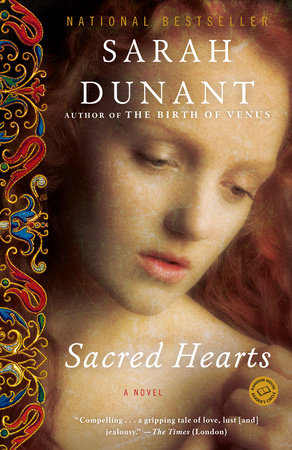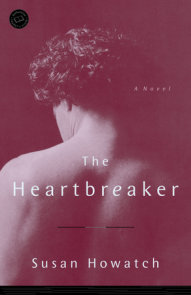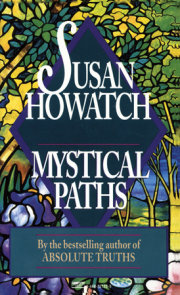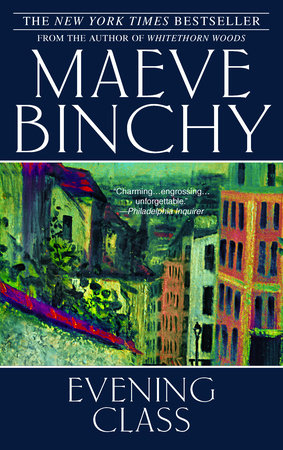Author Q&A
A Conversation with Susan Howatch
Q: Why did you decide to make your protagonist a high-flying female lawyer and atheist?
Susan Howatch: There’s a lot of publicity over here in England about female high flyers. It’s a very hot topic. I also wanted to deal with someone outside of organized religion so that I could explore the healing effect religion can have on people like Carter–how it draws them in. So the female, high-flying lawyer made the story topical, and the fact that she was an atheist made it possible to accomplish what I wanted in terms of exploring religion.
Q: Carter thinks and speaks in a very distinct and colorful voice. The terminology she uses for people–dinosaurs, goddesses, fluffettes– is hilarious. Is her high-flying lingo borrowed from real life?
SH: Some of it is real. We talk a great deal in England about dinosaurs and goddesses. But some of it–fluffettes, for example–is made up. Carter talks in a fake, hard-boiled American style to show that she is not to be messed with at work. It also helps to cover up her blue-collar background, accent, and helps make her classless.
Q: The married couple at the center of this novel, Carter and Kim, are not always the most likable and sympathetic of characters. Was this a deliberate choice? Were they difficult characters to write?
SH: Carter and Kim have cosmic problems. I never intended them to be like the perfect couple next door. They are not idealized people out of a Norman Rockwell painting. I wanted to show why they are the way they are, and in this way readers can understand and empathize with them. And how many of us are saints? We are never as nice and sweet as we think we are. I aim for reality, and want to create characters that are three-dimensional, not two-dimensional.
Q: Did Kim finally tell Carter the truth at Oakshott?
SH: This is a valid question. He is, after all, a pathological liar. However, I think that night at Oakshott when he makes his final confession, he is telling the truth–I myself think he tells it the way it is. But there is always a shadow of a doubt, and I don’t tell my readers what to think. They are free to draw their own conclusions.
Q: Do you know what really happened the night Sophie died?
SH: Well, Kim has no real motive to murder Sophie. Kim tells Carter, "The very last thing I needed was an in-depth police investigation into my private life, and anyway by the time our attempt to destroy Sophie’s credibility failed I had a motive the size of a mountain. Of course I wasn’t going to kill her!" That hangs together, I think. But again, I leave it to my readers to decide for themselves. I don’t tie up all the loose ends.
Q: Sophie is a fascinating character, though the reader never gets to hear her side of the story. Did you always plan that Sophie would be a central yet silent figure in your story?
SH: Sophie was always going to be a central figure because she was Kim’s wife and the story required her. I always saw her as a silent figure who was the focus of so much anxiety for Carter. Of course we only hear Sophie’s side of the story through Kim–he tells us how she reacted. We don’t hear directly from her, but she is enormously important since she is the one who starts the ball rolling when she contacts Carter. Sophie is central, not as a narrator, but as a symbol. She represents suburban decency in the face of all this wickedness.
Q: Why did you decide to create the continually vexed Carter-Nicholas relationship?
SH: Nicholas appears in the first book in the St. Benet’s series–The Wonder Worker–where he is a successful and dynamic healer. However, such gifts also foster pride and arrogance. The ministry of healing is very susceptible to corruption. While Nicholas stumbles in The Wonder Worker, he emerges as a success. I wanted him to fail in this novel, and he does. He cannot get it right with Carter, and flounders around with little success. However, as Lewis points out, this failure is good for Nicholas. It puts him down a peg and humbles him. Of course, in the end he helps Carter with the sheepdog trials story and finally gets it right. I think Carter is quite different from the people he is used to helping, which throws him off. But Nicholas redeems himself in the end and helps Carter enormously. And she helps him.
Q: Will Carter’s father finally keep a promise and stop his gambling? Will Carter forgive him even if he doesn’t?
SH: That’s for the reader to decide. Her father wants to stop, and the recon-ciliation with Carter will give him real incentive. Carter will do her best. She wants to help him heal. Will he succeed? We don’t know. Again my readers will have to make up their own minds.
Q: Would you agree that the City of London, in all its diversity, emerges as a character in its own right in this novel?
SH: Yes, yes, yes. Very much so. I see the City of London as a vibrant and personified backdrop to the action. And the City of London refers to a very specific area. It is where most of the action is set–Carter’s apartment and St. Benet’s are all there. Metropolitan London encompasses a huge area and number of districts. Think of the City of London as a borough, like Manhattan is a borough of New York City. The City of London is the financial district and also the oldest part of London dating back to Roman times. For readers who are not familiar with London, perhaps Carter best sums up the City of London as she surveys it from her balcony in the beginning of the novel: "[B]etween the rich West End and the poor East End, like a jewel wedged between a marble slab and an earthen floor, lay the fabled ‘City,’ the oldest London of all, Roman Londinium, sacked by Boadicea, ravaged by the Saxons, plundered by the Vikings, conquered by the Normans, decimated by the Great Plague, blitzed by the Luftwaffe, but surviving all this radical pruning to flourish more fiercely than ever."
Q: Why is Carter’s telescope so important to her, and why does it remain undisturbed in the midst of the mayhem in her apartment?
SH: Carter finally realizes and admits to Lewis that the telescope is her link to reality–a reality she knows exists but can’t quite reach because of her quest for money and power. It is almost her lifeline to a world of real values, versus the false values she has been pursuing. That could be an explanation for why it isn’t smashed, given the nature of the disturbances in her apartment. The telescope is her link to a reality she cannot afford to lose.
Q: Can your readers surmise from this novel that you do not live in a high-rise apartment building?!
SH: As a matter of fact, I do! I live in a building many stories tall, but only a few stories above street level. I don’t like heights, so I would not live as high up as Carter. I live in a high-rise, but low-down.
Q: Will your readers encounter Mrs. Mayfield again?
SH: Yes, absolutely. That woman has to get her comeuppance. She escaped this time because she symbolizes evil, and you cannot completely stamp out evil because if you do, it will spring up somewhere else. But justice demands that she get her comeuppance in the next St. Benet’s book.
Q: What kind of research did you do for this novel?
SH: I had to do quite a lot of research. Kim’s background required a great deal of research into World War II and the Nazis. I had to learn about the Nazi escape routes to South America, among other things. I also did research on the long tradition of healing ministries in the Church of England. Ministries of healing are a form of complimentary (as opposed to alternative) medicine. Clergymen work alongside medical doctors to offer a holistic approach that treats the body, mind, and soul. In the middle of the twentieth century, a bishop in England revived the tradition of healing ministries. These ministries have really taken off and are now widely accepted and used. Of course, it must be done well and responsibly, or very bad things can happen. The healing field is rife with fraud, but these ministries within the Church are very respectable.
Q: Within the Church of England and the wider society, how controversial are faith healing and ministries of deliverance?
SH: First of all, I would not use the term faith healing, which has a terrible reputation; it is associated with quacks and is usually presented as an alternative to orthodox medicine. I would use the term ministry of healing, because it is complimentary to orthodox medicine and is widely accepted among both clergymen and doctors. The ministry of healing is not controversial when it is done well.
The ministry of deliverance, more popularly known as exorcism, is controversial. Each diocese in the Church has an exorcist, but generally exorcisms are performed on places, not people. With today’s knowledge of psychology, the Church uses very good and reputable people who know what they are doing. Ministries of deliverance operate on the borderline of psychology and religion. Exorcism is another way of dealing with pain and problems. The Church keeps it very quiet because of the grisly reputation of exorcists. The media often gets hold of the wrong end of the stick with these kinds of stories, so while the Church sanctions exorcism, they keep it very quiet and discreet.
Q: Is St. Benet’s Healing Centre modeled on a real institution?
SH: Yes, St. Benet’s is modeled on the St. Marylebone Healing Centre, which is part of the St. Marylebone parish church in central London. Christopher Hamel Cooke, now retired, is the rector who founded the Centre in the 1980s. I went to see him lecture and was inspired to create St. Benet’s. St. Marylebone is in the heart of medical land–the parish covers a neighborhood filled with hospitals and doctors’ offices. Given its location, it is very appropriate that this particular church focuses on the complimentary medicine of the healing ministry.
Q: An important distinction is made in this novel between healing and curing. Will Carter be cured? Could you talk about the differences between the two concepts?
SH: One can argue that no one can be totally cured since no one is totally perfect. One has to aim for perfection, but no one really gets there. However, healing is possible. And the ministry of healing takes a holistic approach to health, covering the body, mind, and spirit, with each being equally important. If you cannot get a physical cure, it is still possible to improve your quality of life through healing the mind and spirit. For example, a terminal cancer patient for whom there is no physical cure can heal spiritual and mental wounds. We all have hidden agendas and unbalanced stuff that can be approached and helped through this holistic approach.
Q: Lewis comments, "Atheists are such religious people, I always feel." What does he mean by this statement?
SH: A religion is a worldview, a way of making sense of the world. The athe-ist’s worldview is that there is no God, and they can be as passionate and dogmatic in defending this belief as any God-believing fundamentalist. So, although their religion is a no-God system, they have a religious temperament. One could say that atheism is another religion in the postmodern supermarket of ideas.
Q: Could you tell us more about the book The Shape of Living by Dr. David F. Ford, from which you used quotations to introduce each chapter?
SH: Dr. David F. Ford is the Regius Professor of Divinity at Cambridge University and the headman in the theology department. When I founded a lectureship in theology and the natural sciences in 1993 at Cambridge, he had just arrived there. I found him to be brilliant, impressive, and delightful. We have been friends for years. David is a high-powered academic who also writes books that are easy to read, and for the general reader. People with no theological background can benefit from The Shape of Living. David talks in a very accessible way about the stresses and strains of modern life and how to keep the mind, body, and spirit from being wiped out by them. He talks about how to survive modern life and it seemed appropriate to use for The High Flyer. His book seemed very relevant to Carter because she was getting wiped out. And I do think theology today must be relevant–theologians should not be locked away in ivory towers. Theology must be applied to real life and the big issues we all face. It must comment on the world as it is. And David does this in The Shape of Living.
Q: For your American readers, could you speak about the class structure in England and how it figures in this novel?
SH: Carter comes from a blue-collar background, but she has educated herself out of the working class by going to Oxford. She feels a bit inferior sometimes, but overall she has reinvented herself so that she has become classless. Kim was brought up in the English upper-middle class (much like a comfortable suburban upbringing in the United States), but he is a foreigner, so he is outside the English class system. Sophie represents a typical well-to-do suburban matron that you might encounter anywhere in the U.S. or England.
Class is much more fluid in England than it used to be. England has changed rapidly in the last ten years and as a result, the class system has become much less rigid. And this novel takes place in an international part of an international city. London is a melting pot. Like in New York City, if you can deliver the goods, it does not matter where you come from. It is what you can produce, not where you come from, that is important. When you travel outside of London the class system is still strong, but is becoming less so, and social mobility is very possible.
Q: This novel is so complex and layered, with a very large and diverse cast of characters. Where did you begin, and how does the writing process work for you?
SH: Well, this novel is the second in the St. Benet’s trilogy, the first of which was The Wonder Worker. However, I want to stress that it is not necessary to read The Wonder Worker first. Every novel in this series is designed to stand alone, so I do not want readers to be put off if they haven’t read the first one. They will learn everything they need to know in The High Flyer. So many of the characters in this novel– Alice, Nicholas–first appeared in The Wonder Worker.
And I always start with the characters. The plot evolves from the characters and what needs to happen to them. I think about it for a long time. I write each of my books five or six times from beginning to end. With each rewrite, the plot develops, deepens, and becomes inevitable. That’s the way I get depth. With the first draft, I just don’t know that much. The process is like peeling an onion, where I uncover layer after layer. That’s just the way it is. It takes time to get the people and the plot synchronized. I don’t paint pictures, but I am told writing a novel is like painting a picture. You slap colors on the canvas, build it up and then whittle it down. That is how I write. Some difficult scenes have to be written eight or nine times. In The High Flyer, the scenes with Kim and Carter at Oakshott were hard. I did not want to leave anything out and also wanted the tension to build with Carter so that at the end she is absolutely terrified. That’s how I work; there is always lots of rewriting.
Q: Reviewers always comment upon the delicate balance you strike among the spiritual, the sensual, and the suspenseful. How do you manage it?
SH: I’ve no idea. Creation is always a complete mystery to me. I do what I can and hope for the best. I have been doing this for a long time. I started writing novels when I was twelve. I was first published when I was twenty-five. I have spent thirty-five years as a professional writer, and experience does count.
Q: You are a prolific author with a long and distinguished career. To what would you credit your staying power and continued success in the writing profession?
SH: I enjoy what I do. And I have wonderful publishers. Leona Nevler, my paperback publisher, and I have worked together since the early 1970s.
Q: What writers have influenced you?
SH: The great Victorian novelists–Anthony Trollope, George Eliot, Charles Dickens, and especially Wilkie Collins. Collins is generally consid-ered of the second rank, but I have learned a great deal from his work. He used multiple narration to great effect, a technique I do not use in this novel, but I have used it frequently in the past. In addition to the Victorians, I have been influenced by American detective fiction of the 1940s, 1950s, and 1960s, including the work of Raymond Chan-dler and Ross MacDonald. I am also a great fan of the British novelist Iris Murdoch who died recently. The big three would be Collins, Chandler, and Murdoch, in terms of influence.
Q: What would you put on a must read list for a reading group?
SH: My next book! I am quite shameless.
Q: What are you working on right now?
SH: The third and final book in the St. Benet’s series. It is going to be a surprise for everyone, especially those in the Church. It is about a prostitute–a male, not a female. Gavin is a straight guy who delivers the goods to businessmen in the City of London and comes in contact with the people at St. Benet’s. It has the same setting as The High Flyer and The Wonder Worker, and will tie in with many of the same characters, like Alice and Nicholas. And Carter will reappear and share the narration with Gavin this time around.
































